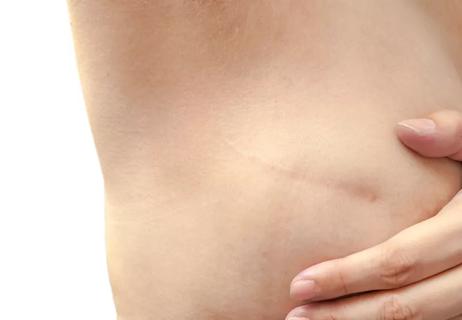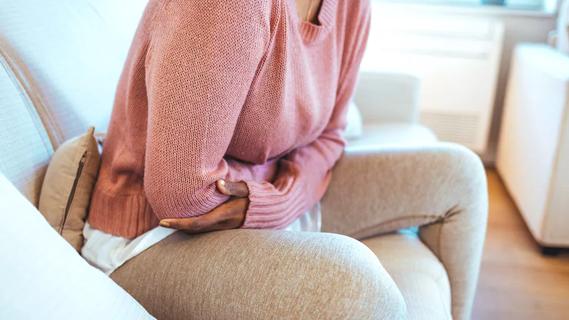Get the scoop on whether going braless poses any health risks

When you’re in chill-out mode, chances are you’re throwing on your favorite stretchy pants and tee for maximum relaxation.
Advertisement
Cleveland Clinic is a non-profit academic medical center. Advertising on our site helps support our mission. We do not endorse non-Cleveland Clinic products or services. Policy
That’s what many of us have done in recent times — we found solace in our comfy clothes. Restrictive suits, tights or dresses gathered dust in the closet. Instead, work-from-home life made sweats and loungewear our fashion of choice.
In the process, many people decided to leave their bras behind. No in-person meetings, no worries — and no wires poking and prodding throughout the day or straps playing peekaboo at the wrong times.
What a glorious feeling!
But after an extended time of not wearing bras, some people might wonder if their time as braless wonders has affected their breasts negatively.
Breast health specialist Cassann Blake, MD, offers her perspective on the matter and helps clear up a few myths about wearing or not wearing a bra.
We’ll bust this myth right off the bat. Despite what you might have heard, Dr. Blake says wearing a bra doesn’t increase your chances of getting breast cancer.
“From a breast cancer standpoint, wearing a bra doesn’t impact your risk of breast cancer. I’ve been asked before if underwire bras can affect someone’s breast cancer risk and they do not. So, wearing a bra doesn’t increase, nor does it decrease, your risk for breast cancer.”
Not wearing a bra for weeks or months can only mean that your breasts have since booked a trip to Sag Harbor, right?
Advertisement
Wrong.
Dr. Blake says wearing a bra doesn’t prevent your breasts from sagging and not wearing one doesn’t cause your breasts to sag. “Wearing a bra doesn’t affect the risk of breast sagging, or what is called ‘breast ptosis,’” she says.
It also won’t impact the shape of your breasts. However, if you are a larger cup size, you may feel more comfortable wearing a bra because it might help alleviate or prevent back pain, which is often due to the weight of your breasts.
“Wearing a sports bra could be helpful in that matter,” says Dr. Blake.
We now know that wearing a bra or not wearing a bra has no direct correlation with breast cancer or breast sagging. So where do people often go wrong when it comes to wearing bras?
According to Dr. Blake, not wearing the right size seems to be a common issue.
“A lot of people wear the wrong bra size,” she says. “When you wear the wrong size, particularly if you’re wearing an underwire bra, that could be painful because the wire isn’t sitting in the proper location. Another thing is that you may gain or lose weight and still wear your favorite bra. By that point, the bra isn’t the right cup size or band length for you any longer.”
To prevent any possible fit problems, Dr. Blake suggests getting professionally fitted for a bra from time to time at a department store or a lingerie shop.
Workouts are no match for your everyday bra. Dr. Blake recommends wearing a bra that supports your level of activity.
“Purchase a bra with the right amount of support for the activity you’re doing. You might not want to wear a sports bra with a lot of support while you’re binge-watching TV. But if you’re running, get a bra with better support, especially if you wear a larger cup size.”
Dr. Blake adds that a good sports bra can minimize the motion of your breasts. When your breasts move around a lot, you might experience breast or back pain. If you experience breast pain regularly or in one specific area of your breasts, she recommends talking to your healthcare provider. If the pain doesn’t occur frequently, she says you can take a pain reliever like acetaminophen or ibuprofen.
Excess sweat, yeast or fungus can make wearing a bra quite uncomfortable. These things can lead to rashes, blisters, cracks, discoloration and irritation in general. Dr. Blake says much of this can be avoided if your breasts are correctly positioned in your bra.
“You want to be mindful of how you position your breasts in a bra, particularly during warmer months. When you wear a larger cup size, skin rubbing can occur along the inframammary fold (the area under the breast crease). If you experience rubbing with moisture, you can develop a fungal infection. You can prevent this by positioning your breasts in the bra so that it doesn’t happen. You can also apply antiperspirant under and between your breasts to decrease perspiration.”
Advertisement
As for other methods of preventing irritation, Dr. Blake suggests trying a wireless bra or applying cornstarch under your breasts to prevent moisture from forming. If you have any irritation or discoloration, it might clear up once the moisture issue is addressed.
Ultimately, the choice is up to you. If you feel comfortable sans bra, good for you. If you prefer to have a bra for every season and occasion, there’s nothing wrong with that. Is it bad to wear a bra to bed? Nope, not if it makes you feel better. Dr. Blake says this very personal decision all comes down to your comfort.
“It’s OK to do whatever is comfortable for you. If not wearing a bra feels good to you, that’s fine. If you feel that some support is needed, then maybe a bralette or a wire-free bra would be a happy medium at home. It all depends on what you’re comfortable with.”
Advertisement
Learn more about our editorial process.
Advertisement

Work with your doctors to find the best approach for breast reconstruction

Bleeding is a risk and warrants taking care, but the reward of this lifesaving medication is great

Severe and debilitating headaches can affect the quality of your child’s life

With repeat injections over time, you may be able to slow the development of new wrinkles

Although it can be alarming, it’s normal to experience blood clots during menstruation

Type 2 diabetes isn’t inevitable with these dietary changes

Applying a hot or cold compress can help with pain